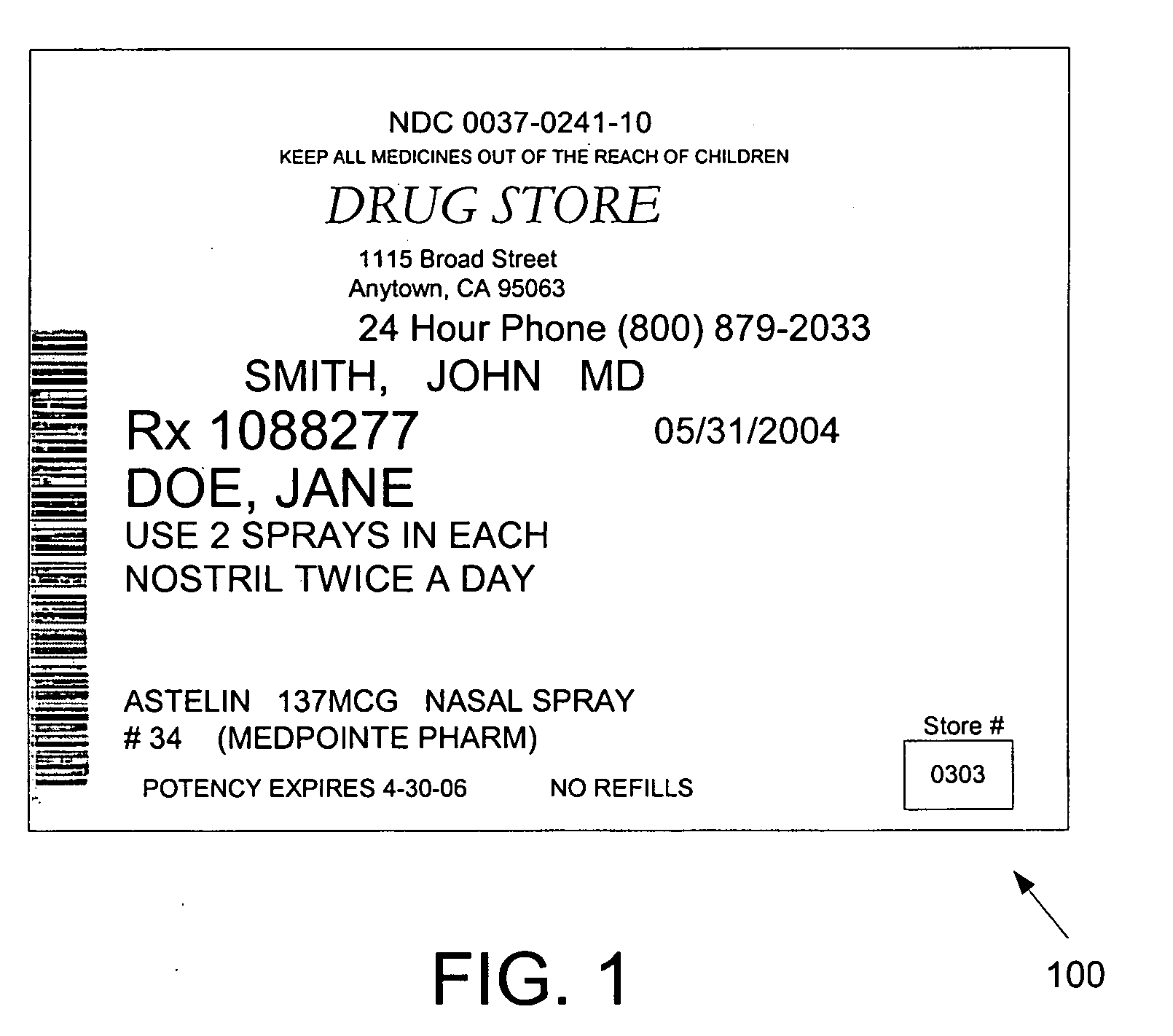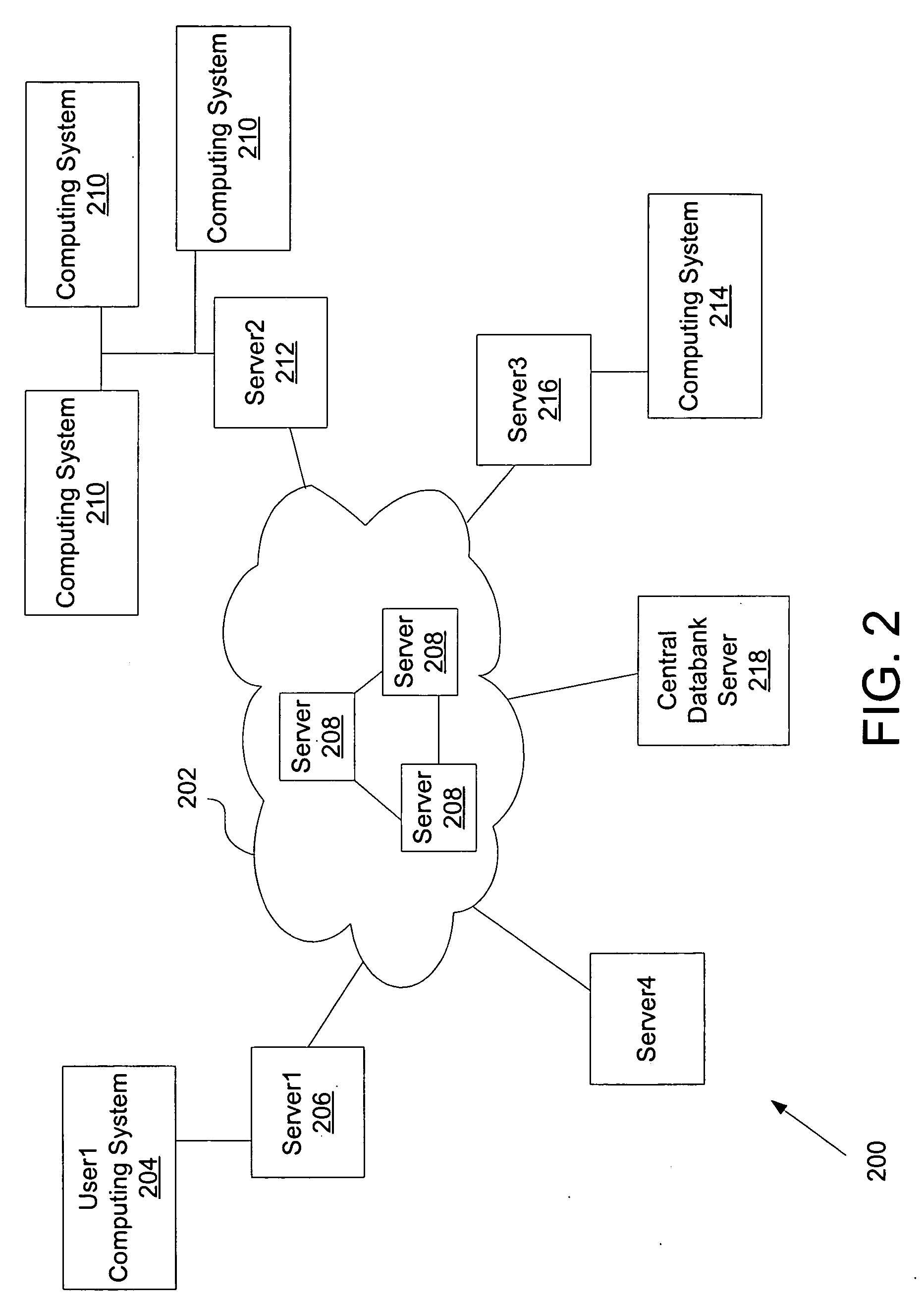System and method for labeling pharmaceutical prescriptions
a system and method technology, applied in the field of health care, can solve the problems of billions of dollars in avoidable health care costs, 51.5 million errors, 3.3 million of them potentially serious or deadly, etc., and achieve the effects of convenient reordering of medication or food supplements, quick identification of proper medications, and convenient follow-up of administration directions
- Summary
- Abstract
- Description
- Claims
- Application Information
AI Technical Summary
Benefits of technology
Problems solved by technology
Method used
Image
Examples
Embodiment Construction
[0040] The present invention provides a system and method for labeling pharmaceutical prescriptions and / or food supplements, such as vitamins and minerals. In accordance with various embodiments of the present invention, a computer-implemented process as described herein reduces the risk of mistakenly taking or giving medication at a wrong time or with a wrong dosage.
[0041] Referring now to FIG. 2, a generalized diagram of an exemplary network 200 in which the present invention may be practiced is shown. In FIG. 2, the network 200 comprises several local networks coupled to the Internet 202. Although specific network protocols, physical layers, topologies, and other network properties are presented herein, the present invention is suitable for use with any data communications network.
[0042] As shown in FIG. 2, a User1 computing system 204 is connected to a Server1 206 which in turn is coupled to the Internet 202. The User1 may be a network participant or a patient. The connection ...
PUM
 Login to View More
Login to View More Abstract
Description
Claims
Application Information
 Login to View More
Login to View More - R&D
- Intellectual Property
- Life Sciences
- Materials
- Tech Scout
- Unparalleled Data Quality
- Higher Quality Content
- 60% Fewer Hallucinations
Browse by: Latest US Patents, China's latest patents, Technical Efficacy Thesaurus, Application Domain, Technology Topic, Popular Technical Reports.
© 2025 PatSnap. All rights reserved.Legal|Privacy policy|Modern Slavery Act Transparency Statement|Sitemap|About US| Contact US: help@patsnap.com



